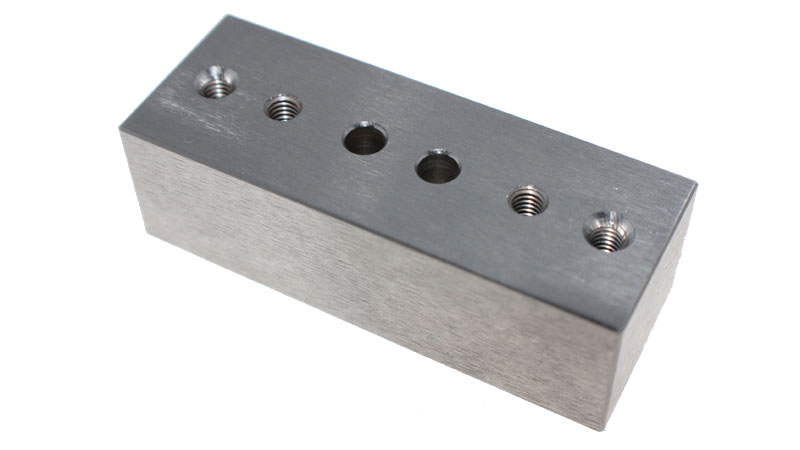Вступление
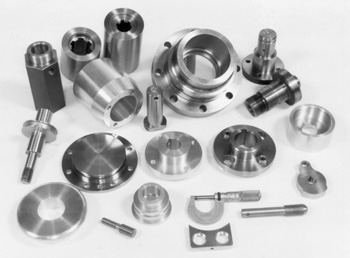 Люди называют легированную сталь с содержанием хрома более 12% или никеля более 8% нержавеющей сталью. Эта сталь обладает определенной коррозионной стойкостью в атмосфере или агрессивных средах и обладает высокой прочностью при более высоких температурах (>450°C). Сталь с содержанием хрома от 16% до 18% называется кислотостойкой сталью или кислотостойкой нержавеющей сталью, и обычно ее называют нержавеющей сталью.
Люди называют легированную сталь с содержанием хрома более 12% или никеля более 8% нержавеющей сталью. Эта сталь обладает определенной коррозионной стойкостью в атмосфере или агрессивных средах и обладает высокой прочностью при более высоких температурах (>450°C). Сталь с содержанием хрома от 16% до 18% называется кислотостойкой сталью или кислотостойкой нержавеющей сталью, и обычно ее называют нержавеющей сталью.
Feature
Stainless steel has the characteristics of corrosion resistance, scale resistance, acid resistance, impact resistance and toughness in a wide temperature range. Depending on the environment, it can provide a variety of grades and surface finishes, making these parts an ideal choice for many applications. The chromium in the steel allows the formation of a rough, invisible, corrosion-resistant chromium oxide film on the steel surface. If the material is mechanically or chemically damaged, the film will repair itself (assuming oxygen is present). In addition, its 100% recyclable feature provides a new way for stainless steel as an environmentally friendly material. Therefore, it has been widely used in heavy industry, light industry, daily necessities industry and building decoration industries.
The Classes of Stainless Steel
Stainless steel is usually divided into 5 different categories. Each element is identified by an alloying element that affects its microstructure and is named for this. Are Austenitic,
Austenitic Grade
Austenitic stainless steel is the most commonly used type of stainless steel and is not magnetic. The most common austenitic alloy is iron-chromium-nickel steel, widely known as the 300 series. Mainly add chromium (about 18% to 30%) and nickel (about 6% to 20%). Due to the high content of chromium and nickel, austenitic stainless steel is the most corrosion-resistant in the stainless steel group. It maintains its strength at high temperatures and is easy to maintain, and is highly formable, thereby providing exceptionally excellent mechanical properties. They can be cold worked but cannot be heat treated. Usually used to manufacture shafts, valves, bolts, bushings, nuts, aircraft accessories, brewing equipment and cryogenic vessels.
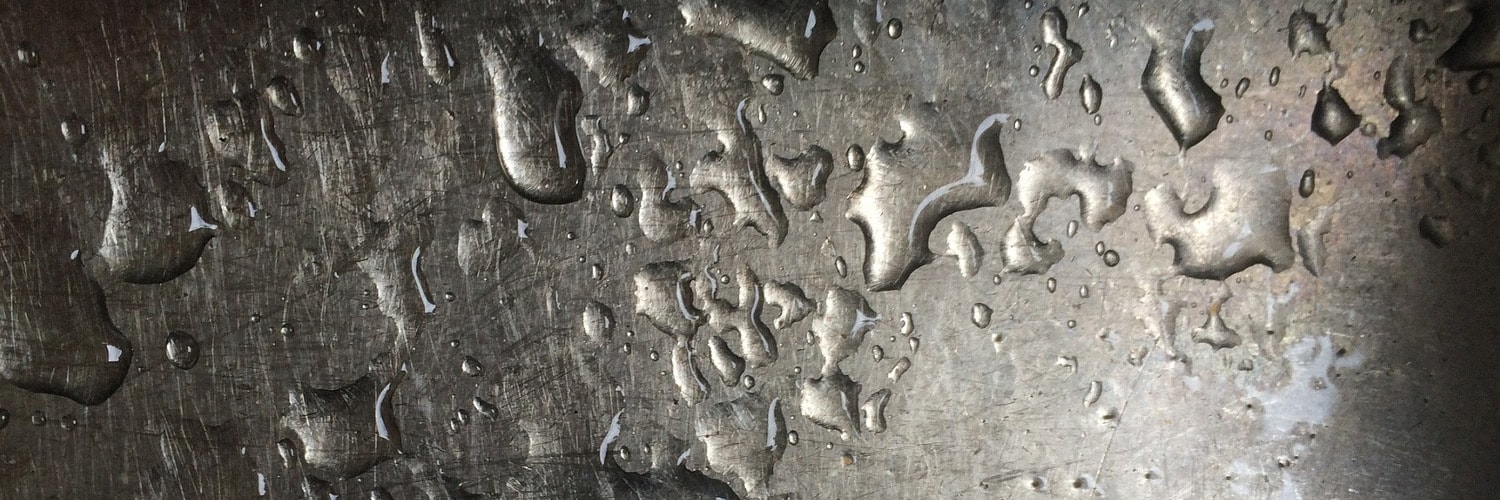 Standard Grade
Standard Grade
The standard grade of austenitic stainless steel contains up to 0.08% carbon. There is no minimum carbon requirement.
Low Carbon Grade (L grade)
The «L» grade is used to provide additional corrosion resistance after welding. The letter «L» after the stainless steel grade indicates low carbon (such as 304L). The carbon content should be maintained at a level of 0.03% or lower to avoid carbide precipitation. Due to the temperature generated during the welding process (which can cause carbon precipitation), the «L» level is usually used. Generally, stainless steel rolling mills can provide these stainless steel grades with dual certification, such as 304 / 304L or 316 / 316L.
High Carbon Grade (H grade)
Stainless steel «H» grade has a minimum carbon content of 0.04% and a maximum carbon content of .10%. Higher carbon helps maintain strength at extreme temperatures. The letter «H» after the stainless steel grades represents these grades. This grade will be used when the end use involves extreme temperature environments.
Тип 304
Одна из наиболее часто используемых марок (аустенитной) нержавеющей стали с основным составом 18/8 (18% хрома, 8% никеля) и максимальным содержанием углерода 0,07%, также известная как нержавеющая сталь А2.
Он обладает превосходной коррозионной стойкостью, прост в обработке и обладает отличной формуемостью после обработки с ЧПУ. Тип 304 / 304L обладает хорошей формуемостью и отличными сварочными характеристиками и идеально подходит для различных бытовых и коммерческих применений.
Высокое содержание хрома и никеля делает его лучшим выбором для изготовления технологического оборудования, используемого в химической (слаборастворимые химикаты), пищевой /молочной промышленности и производстве напитков.
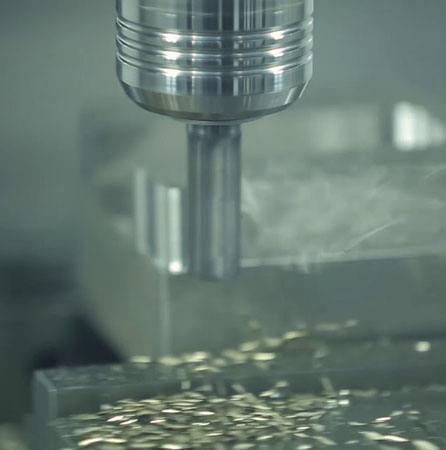
Type 309
Higher chromium and nickel content can provide better corrosion resistance and high temperature fouling resistance, suitable for high temperature applications up to 1900F. Strong corrosion resistance. 309 can be cold worked, but not heat treated. It is weldable and relatively easy to process.
This alloy is commonly used in furnace parts, thermowells, power station boiler tube hangers, generators, paper mills, refineries, brazing fixtures, bolts, refractory brackets and furnace linings.
Type 316
It is the second most widely used steel after 304, containing 16% to 18% chromium, 11% to 14% nickel, and at least 2% molybdenum. These combine to improve its corrosion resistance. In particular, molybdenum is used to help control pitting corrosion of corrosion. This grade can resist fouling at temperatures up to 1600 F.
Used in chemical processing, pulp and paper industry, food and beverage and surgical equipment, processing and distribution, and corrosive environments. Because it has better resistance to chloride corrosion than 304, it is also used in the marine industry. SS316 is usually used in nuclear fuel recovery devices. 18/10 grade stainless steel usually meets this application level.
Type 317
If the molybdenum content is higher than 316, the molybdenum content of this grade must be greater than 3%. This alloy is weldable, easy to work, and can be cold and hot worked. But it cannot be heat treated.
Commonly used in strong corrosive environments, often used in scrubber systems of air pollution control equipment. It is an ideal material for manufacturing generators, absorption towers, boilers, condenser tubes, heat exchanger tubes, pressure vessels, chimney pipe fittings and valves
Type 317L limits the maximum carbon content to a maximum of 0.030%. Silicon can be up to 0.75% for additional corrosion resistance.
Type 321
The titanium content is at least five times the carbon content. This is done to reduce or eliminate chromium carbide precipitation caused by welding or exposure to high temperatures.
Suitable for environments with temperatures up to 1500 degrees Fahrenheit. It is prone to creep and fracture, and has high resistance to stretch and vibration fatigue. Mainly used for manufacturing aircraft exhaust pipes and manifolds, jet engine parts, boiler shells, heaters, etc.
Type 348
The columbium-tantalum content binds carbon and helps to avoid precipitation of chromium carbide during welding. It has excellent corrosion resistance after exposure to temperatures of 800-1500°F.
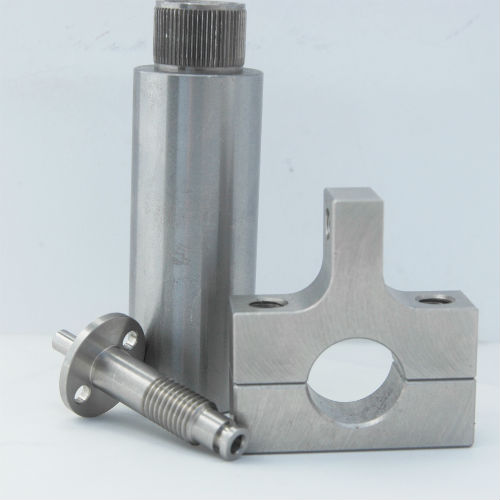
Мартенситный сорт
Мартенситные марки нержавеющей стали представляют собой группу коррозионностойких и закаливаемых (с использованием термообработки) сплавов из нержавеющей стали. Мартенситная марка — это прямохромистая сталь, не содержащая никеля. Они магнитны, могут быть закалены термообработкой и не так устойчивы к коррозии, как аустенитная нержавеющая сталь. Мартенситные марки в основном используются там, где требуются твердость, прочность и износостойкость.
Обычно используется для изготовления валов насосов, болтов и винтов, клапанов, втулок, заклепок, резервуаров для угля, посуды, деталей реактивных двигателей, деталей самолетов, горного оборудования, стволов винтовок и вставок для огнетушителей. Распространенные оценки включают 410, 414, 416, 420, 431, и 440.
Type 410
The basic martensite grade contains the lowest alloy content among the three basic stainless steels (304, 430 and 410). Low cost, general purpose, heat-treatable stainless steel. Stainless steel 410 contains at least 1.5% chromium, so it is particularly resistant to corrosion by many chemicals and acids. It is widely used in places where corrosion is not serious (air, water, certain chemicals and edible acids). The application of this product may include parts that require a combination of strength and corrosion resistance, such as fasteners.
Compared with 410 type, 410S has lower carbon content, higher weldability, but lower hardenability. Type 410S is a general-purpose corrosion-resistant and heat-resistant chromium steel recommended for corrosion-resistant applications.
Type 414
Nickel (2%) is added to improve corrosion resistance. Applications include bolts and nuts, pressure plates, valve components, knife surgical instruments and petroleum refining equipment. Typical applications include springs and tableware.
Type 416
A special variant of 410, the added phosphorus and sulfur can improve the cutting performance and can be heat treated. Typical applications include screw machine parts.
Type 420
Add carbon to improve the mechanical properties. It can be heat treated up to about 500 Brinell hardness, and has the greatest corrosion resistance after fully hardened. Suitable for all kinds of precision machinery, bearings, electrical, equipment, instruments, meters, transportation tools, household appliances, etc. It is mostly used to manufacture parts that are resistant to atmospheric, water vapor, water and oxidizing acid corrosion.
Type 431
The nickel content is 1.252% and the chromium content is increased, which has higher corrosion resistance and good mechanical properties, and the corrosion resistance is better than 410 steel and 430 steel. It has the highest corrosion resistance among all hardenable martensitic stainless steels. It can be hot worked or cold worked and hardened up to 40 HRC. Typical applications include valves, pumps, aircraft components, propeller shafts and marine equipment.
Type 440
There are three commonly used models of 440 stainless steel B: 440A, 440B, 440C, and 440F (easy processing type). The further increase of chromium and carbon content helps to improve the toughness and corrosion resistance of this type. The hardness can reach 58HRC, which is among the hardest stainless steels. Typical applications include surgical instruments, such as medical scalpels, scissors, nozzles, bearings, etc.
Ферритная марка
Ферритные нержавеющие стали, как и мартенситные стали, представляют собой чистые хромистые стали, не содержащие никеля, которые устойчивы к коррозии и окислению, сохраняя при этом устойчивость к напряжениям и растрескиванию. Хотя эти стали являются магнитными, они не могут быть упрочнены термической обработкой. Они могут быть обработаны холодным способом и размягчены отжигом. Они обладают более высокой коррозионной стойкостью, чем мартенситные марки, но, как правило, не так хороши, как аустенитные марки. Обычно используется в декоративных полосах, раковинах и некоторых автомобильных применениях (например, в выхлопных системах). Распространенные оценки включают 405, 409, 430, 434, 436, 442, и 446.
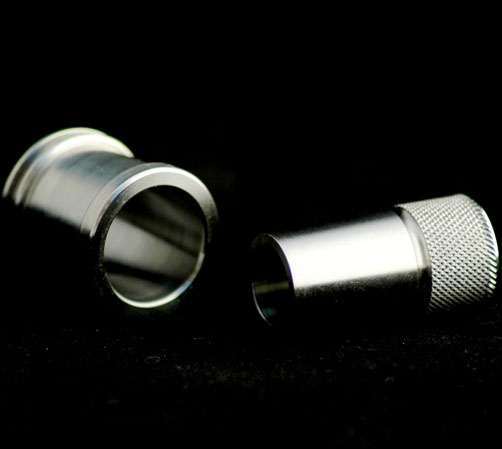
Type 405
Contains 12% chromium and adds aluminum. After cooling from high temperatures, this chemical composition helps prevent hardening. Ideal for welding applications. Highly shaped and easy to process. Typical applications include heat exchangers, steam turbine materials, parts for quenching, etc.
Type 409
Containing 11% chromium, because the chromium content is the lowest among all stainless steels, this is the smallest amount of passivation surface film that forms the corrosion resistance of stainless steel, and it is one of the cheapest stainless steel grades.
This type can only be used for internal or external parts in non-critical corrosive environments. Typical applications include silencers.
Compared with carbon steel, 409 alloy has strong corrosion resistance and can be used as an alternative material for carbon steel in a mildly corrosive environment. Because of its higher corrosion resistance and high temperature oxidation, it has advantages.
Type 430
430 stainless steel is a general-purpose steel with good corrosion resistance. It has better thermal conductivity than austenite, a smaller thermal expansion coefficient than austenite, heat fatigue resistance, addition of stabilizing element titanium, and good mechanical properties of the weld. 430 stainless steel is used for building decoration, fuel burner parts, household appliances, and home appliance parts.
430F is a steel grade with free-cutting performance added to 430 steel. It is mainly used for automatic lathes, bolts and nuts. 430LX adds Ti or Nb to 430 steel, reduces C content, improves processing performance and welding performance. It is mainly used in hot water tanks, hot water supply systems, sanitary appliances, household durable appliances, bicycle flywheels, etc.
Type 434
Containing 12% to 30% chromium, molybdenum is added to improve corrosion resistance. Its corrosion resistance, toughness and weldability increase with the increase of chromium content, and its resistance to chloride stress corrosion is better than other types of stainless steel. 434 is an improved steel grade of 430 steel, which is more resistant to salt than 430 steel, and is often used in automobile decoration parts and fasteners.
Type 436
436 stainless steel is a modified steel grade of 434. Columbium is added to this grade to improve its corrosion resistance and heat resistance. Can be used for deep drawing parts, gas burners, dishwashers, range hoods, steam irons, pans, etc.
Type 442
It has extremely high corrosion resistance because of its high chromium content, excellent heat resistance and anti-scaling properties, but it cannot be heat treated and is difficult to process. Applications include furnaces and combustion parts, zinc die casting machines, nitrogen fixing parts, nitric acid storage tanks
Type 446
The high chromium content (27%) can further improve the corrosion resistance and scale resistance at high temperatures. High temperature and corrosion resistance, no flaking oxide scale below 1082℃, used in combustion chamber.
Отверждение осадками (PH) Оценки
Подобно мартенситу, нержавеющая сталь атмосферного твердения также может быть упрочнена термообработкой. Его прочность, твердость и коррозионная стойкость лучше, чем у нержавеющей стали с мартенситным хромом. Обычно он обладает более высокой прочностью, чем аустенитная нержавеющая сталь, и сохраняется при высоких температурах. Может сохранять большую часть своей прочности. Обычно их называют нержавеющей сталью типа PH, обе содержат относительно высокое содержание хрома и используются для изготовления военной техники и элементов конструкций аэрокосмической промышленности. Распространенные сорта включают РН 17-7, РН 15-7 Мо, РН 17-4 и РН 15-5.
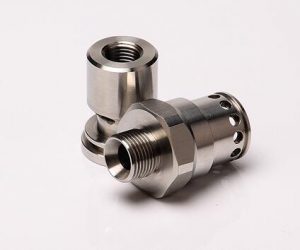
Type17-7
After solid solution treatment of 17-7PH stainless steel, it becomes unstable austenite structure with good ductility and workability. After adjustment, the composition of austenite precipitates and carbides changes, and then after martensite transformation treatment, most The structure transforms into low-carbon tempered martensite with better toughness. This state is the state of use of steel and has good mechanical properties at medium temperature. The corrosion resistance of 17-7PH is better than that of general martensitic stainless steel.
Type PH 15-7 Mo
It is a steel grade developed with 2% molybdenum instead of 2% chromium in 0Cr17Ni7Al steel. Its basic performance is similar to that of 17-7PH steel, but its overall performance is better. In the austenite state, it can withstand various cold forming and welding processes. After heat treatment, the highest strength can be obtained. It has excellent high temperature strength below 550°C. It is used in the manufacture of thin-walled structural parts for aviation, various containers, pipelines, springs, valve membranes, ship shafts, compressor discs, reactor parts, and various chemical equipment and other structural parts.
Type 17-4
Alloy 17-4 is a chromium copper precipitation hardening stainless steel with excellent oxidation and corrosion resistance. The mechanical properties such as strength, ductility and oxidation resistance can be optimized by heat treatment. This grade can be heat treated at various temperatures; it produces a wide range of finished product properties. This grade must not be used at temperatures higher than 300°C or very low temperatures.
Type 15-5
This is a variation of the older 17-4 chromium-nickel-copper precipitation hardening martensitic stainless steel. The toughness of 15-5 alloy is higher than 17-4. Compared with other similar martensitic grades, it is used for applications requiring better corrosion resistance and lateral performance.
Duplex (Ferritic-Austenitic) Grade
Duplex stainless steel is the latest stainless steel, a combination of austenitic and ferritic materials. It is famous for its extremely high strength and resistance to stress corrosion cracking. The strength of these grades is about twice that of austenitic and ferrite grades. Although they do have better toughness and ductility than ferritic steels, they do not reach the level of austenitic steels. Easy to heat treatment, but difficult to cold form. Usually used to manufacture chemical processing equipment, pressure vessels and heat exchanger components.
Duplex stainless steels are divided into the following 4 categories:
The first type is a low-alloy type, representing the brand UNS S32304 (23Cr-4Ni-0.1N), the steel does not contain molybdenum, and the PREN value is 24-25. It can be used instead of AISI304 or 316 in terms of stress corrosion resistance.
The second category is a medium alloy type, the representative grade is UNS S31803 (22Cr-5Ni-3Mo-0.15N), the PREN value is 32-33, and its corrosion resistance is between AISI 316L and 6% Mo+N austenitic stainless steel between.
The 3rd category is a high-alloy type, generally containing 25% Cr, also containing molybdenum and nitrogen, and some also containing copper and tungsten. The standard grade is UNSS32550 (25Cr-6Ni-3Mo-2Cu-0.2N), and the PREN value is 38-39 The corrosion resistance of this type of steel is higher than that of 22% Cr duplex stainless steel.
The 4th category belongs to super duplex stainless steel type, containing high molybdenum and nitrogen, standard grade UNS S32750 (25Cr-7Ni-3.7Mo-0.3N), and some also contain tungsten and copper, PREN value is greater than 40, suitable for harsh Medium conditions, with good corrosion resistance and mechanical comprehensive properties, comparable to super austenitic stainless steel.
Технологические характеристики
В ходе многолетней практики обработки деталей из нержавеющей стали компания SANS пришла к выводу, что нержавеющая сталь обладает следующими характеристиками в процессе резки с ЧПУ:
Суровая рабочая закалка:
Пластичность нержавеющей стали велика, характер искажается при пластической деформации, а коэффициент упрочнения велик; а аустенит недостаточно стабилен, под действием напряжения резания часть аустенита преобразуется в мартенсит; плюс в соединении под действием тепла резания образуются примеси. легко разлагается и распределяется дисперсным образом, так что при резке образуется затвердевший слой. Затвердевание заготовки, вызванное предыдущей подачей или предыдущим процессом, серьезно влияет на плавный ход последующего процесса.
Большое усилие резания:
Пластическая деформация нержавеющей стали в процессе резки велика, что приводит к увеличению силы резания. Нержавеющая сталь обладает серьезной рабочей закалкой и высокой термической прочностью, что еще больше повышает стойкость к резанию, а также затрудняет скручивание и разрушение стружки.
Высокая температура резания:
Пластическая деформация и трение с инструментом во время резки велики, и выделяется много тепла при резании; большое количество тепла при резании концентрируется на границе раздела между зоной резания и контактом инструмент-стружка, а условия отвода тепла плохие.
Чипсы нелегко сломать и склеить:
Нержавеющая сталь обладает большой пластичностью и прочностью. При обработке с ЧПУ стружка образуется непрерывно, что не только влияет на плавность выполнения операции, но и приводит к сминанию обрабатываемой поверхности. При высокой температуре и высоком давлении нержавеющая сталь обладает сильным сродством с другими металлами, которые склонны к адгезии и образованию наростов, что не только усугубляет износ инструмента, но и приводит к разрывам и ухудшению качества обрабатываемой поверхности.
Инструмент прост в носке:
Сродство в процессе резки нержавеющей стали вызывает склеивание и диффузию между инструментом и стружкой, тем самым вызывая износ инструмента при склеивании и диффузионный износ, что приводит к образованию серповидных кратеров на торцевой поверхности инструмента и образованию крошечных режущих кромок. Кроме того, твердость карбида повышается. (таких как TiC) частиц в нержавеющей стали очень много. При резке он непосредственно соприкасается с инструментом и трется о него, царапает инструмент, а явление затвердевания увеличивает износ инструмента.
Большой коэффициент линейного расширения:
Коэффициент линейного расширения нержавеющей стали примерно в 1,5 раза больше, чем у углеродистой стали. Под действием температуры резания заготовка подвержена термической деформации, и точность размеров трудно контролировать.
Нержавеющая сталь все чаще используется в электроэнергетике, авиации, аэрокосмической, нефтяной и пищевой промышленности благодаря своим особым свойствам. Несмотря на то, что резка нержавеющей стали характеризуется высокой термической прочностью, большой пластической деформацией, сильным упрочнением при обработке, чрезмерным нагревом при резании и трудностями с отводом тепла, качество обработки нержавеющей стали может быть гарантировано путем выбора соответствующих инструментов, смазочно-охлаждающей жидкости, количества резания и методов обработки.
Преимущества обработки деталей из Нержавеющей Стали
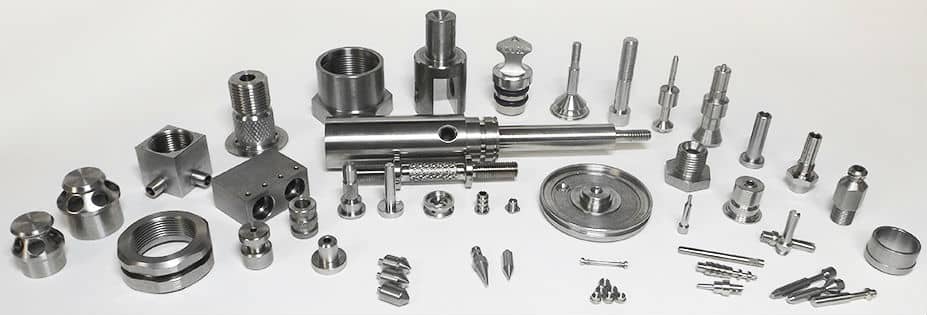 Тонкая и плотная оксидная пленка, богатая хромом, на поверхности нержавеющей стали обеспечивает водопроводным трубам из нержавеющей стали хорошую коррозионную стойкость при любом качестве воды, включая мягкую, даже если они закопаны в землю, они обладают превосходной коррозионной стойкостью.
Тонкая и плотная оксидная пленка, богатая хромом, на поверхности нержавеющей стали обеспечивает водопроводным трубам из нержавеющей стали хорошую коррозионную стойкость при любом качестве воды, включая мягкую, даже если они закопаны в землю, они обладают превосходной коррозионной стойкостью.
Нержавеющая сталь может безопасно работать в течение длительного времени при температуре от -270 ℃ до -400 ℃, независимо от того, высокая это температура или низкая, вредные вещества не будут осаждаться, а характеристики материала достаточно стабильны.
Материал из нержавеющей стали безопасен и нетоксичен, не вызывает коррозии и выделений, не имеет специфического запаха или мутности и не приведет к вторичному загрязнению качества воды. Благодаря этому качество воды остается чистым и гигиеничным, а санитарная безопасность полностью гарантирована.
Нержавеющая сталь обладает коррозионной стойкостью, повышенной прочностью, деформацию стали нелегко сломать, а также защитными свойствами для окружающей среды, не легко ржавеет и обладает хорошей пластичностью и ударной вязкостью. Подходит для использования в суровых условиях (внутри и снаружи помещений, таких как влажность, кислоты и щелочи).
Применение обрабатываемых деталей из Нержавеющей стали
1. Медицинская промышленность
Существует слишком много игл из нержавеющей стали, скальпелей из нержавеющей стали, инвалидных колясок из нержавеющей стали, подставок для инфузий из нержавеющей стали и медицинских пинцетов из нержавеющей стали. Особенно при использовании ортопедических средств, которые могут быть необходимы каждый день.
Благодаря превосходным эксплуатационным характеристикам нержавеющей стали, более совершенной технологии производства и низкой цене нержавеющая сталь все шире используется в медицине. Использование нержавеющей стали в медицине стало основной тенденцией развития.
2. Электронная и бытовая промышленность
Благодаря своим характеристикам нержавеющая сталь получила широкое применение в других областях электроники. Например, современные водонагреватели для хирургических вмешательств изготавливаются из нержавеющей стали, а нагревательные трубки кофемашин полностью изготовлены из нержавеющей стали. Есть и другие, возможно, вы знаете это по своей повседневной жизни.
3. Автомобильная промышленность
Вторжение нержавеющей стали в автомобильный сектор является едва ли не самым масштабным. В настоящее время наиболее быстрорастущей областью применения нержавеющей стали является автомобилестроение. В настоящее время наиболее важным материалом для изготовления автомобилей является, в основном, нержавеющая сталь. В основном используется в кузове, выхлопной системе, топливном баке, раме и деталях из нержавеющей стали, а также в отделке автомобилей. Из-за большого спроса на нержавеющую сталь в автомобилестроении автомобильная отрасль, по сути, является одной из основных движущих сил в разработке нержавеющей стали
Нержавеющая сталь также может быть использована в некоторых высокотехнологичных областях машиностроения, таких как пищевая промышленность, химия, медицинское оборудование, выхлопные трубы самолетов и т.д. Нержавеющая сталь широко используется в таких отраслях, как тяжелая промышленность, легкая промышленность, производство предметов первой необходимости и архитектурное оформление.
Мы, SANS Machining, стремимся предоставлять высококачественные услуги по конкурентоспособным ценам. Наш обширный опыт в сочетании с экспертными знаниями помогли нам с легкостью взяться за различные сложные проекты. Наш длинный список счастливых и довольных клиентов является свидетельством нашей приверженности предоставлению качественных услуг в кратчайшие сроки. Свяжитесь с нами или запросите ценовое предложение сегодня об использовании наших услуг по обработке нержавеющей стали с ЧПУ.




